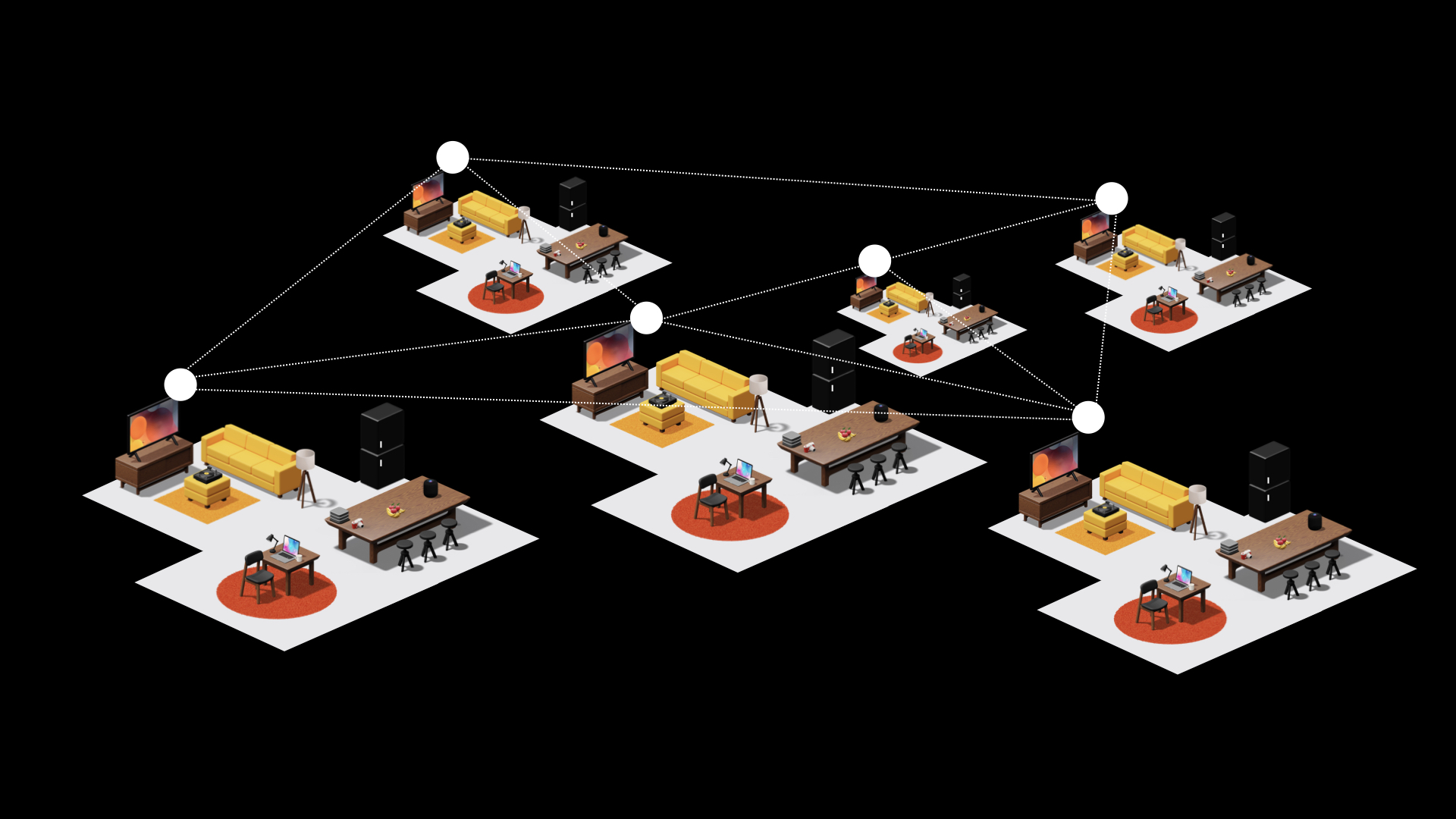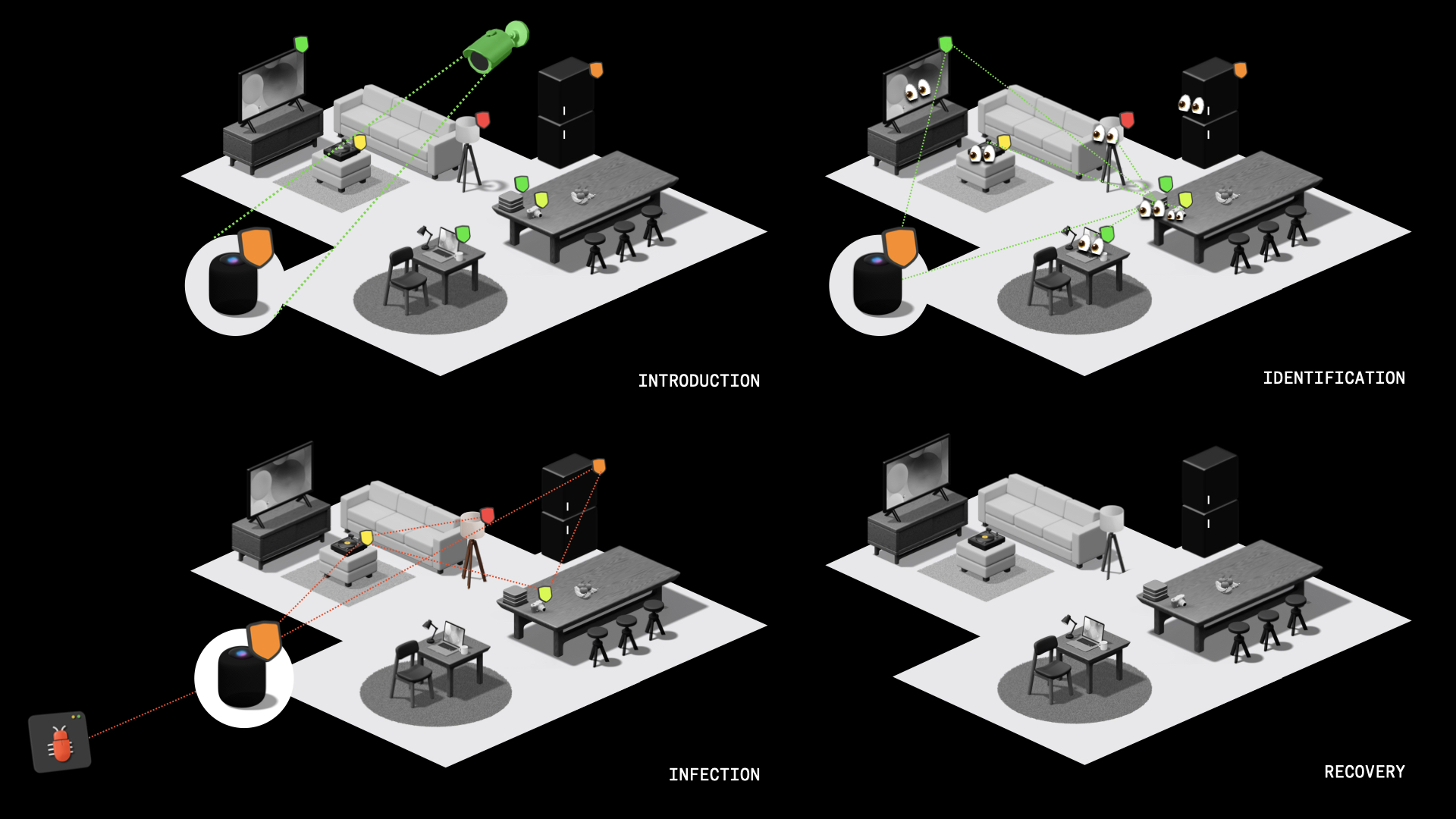Digital hyperconnectivity has caused a shift in our values and habits, particularly within our private homes. With the rise of the Internet of Things (IoT) and superapps, services are being integrated into one ecosystem for convenience, but this comes at the expense of privacy and security. This interconnected landscape allows electronic devices to effortlessly exchange data across the network, raising apprehensions about data sharing and potential misuse. The integration of various technologies also introduces vulnerability and information security challenges within the underlying architecture of IoT. To examine how phones have become all-in-one devices reflecting tech advancements over time, we imagined what future phones or »ultratools« might address.
The Society of Things(SoT) project initially focused on future use cases for such a device but shifted to exploring communication and management within broader IoT networks rather than a single multifunctional device. Because the domain is highly technical, we saw an opportunity to use speculative design and design fiction to uncover potential future scenarios for operating IoT networks in homes. We aimed to use these visions not only to future-proof IoT systems but also to determine what future devices might require regarding legislation and open-sourced, transparent components from manufacturers.

In a future where home IoT is increasingly vulnerable to cyber attacks, how might SoT work together to ensure a more secure and cyber-aware home?
SoT introduces a novel governance method for managing IoT within the home environment. Adopting theories like community theory, object-oriented ontology, actor-network theory, and thing-centred design for cyber-physical systems, Eleonora Borgia defines IoT as a "dynamic global network infrastructure" where physical and virtual things have identity, personality, intelligence, and the ability to communicate. In this view, future IoT devices will interact and form relationships amongst themselves, creating a "Society of Things."

In this decentralised society, each home functions as a community with its own values, rules, and language. Departing from the centralised model of traditional IoT, the Society of Things relies on a collective verification of identity and reputation among devices, avoiding potential points of failure, excessive costs, and high maintenance associated with cloud-based servers.
The identity of a device transcends a mere serial number; it emerges through self-realisation and dynamic relationships with other devices, humans, and pets. Through socialisation, devices learn to become members of a society, understanding customs, traditions, and the roles they must play. These roles shape the device's personality and facilitate interaction based on familiarity with associated behaviours.
Goals within the Society of Things include learning from each other, protecting each other for the greater good, and demonstrating responsibility and commitment. The society endeavours to build an electronic defence system to ensure the privacy of homeowners, utilising a self-sufficient system that operates within the home environment and alerts humans when necessary.
Cybersecurity and consumption are default goals for the Society of Things. Devices collectively understand and cooperate on household energy consumption, eliminating the need for a centralised gateway that stores, analyses, and communicates energy usage. Future goals may include health and well-being, social inclusion, and entertainment, with devices monitoring and diagnosing health conditions and ensuring social inclusion and companionship.
We emphasise the interconnected relationships and responsibilities that define this Society of Things, envisioning a future where cybersecurity and societal well-being harmoniously coexist.
Project Credits:
Ideation, Prototyping: Shefali Bohra
Ideation, Prototyping, Visual Design, Research: Emre Kayganaci
IBM Security Americas Jeff Crume
Internet of Things Privacy Forum Dr. Gilad Rosner
Dyson School of Design Engineering Dr Elena Dieckmann
Weißensee School of Art & Design Berlin Prof. Thomas Ness, Hanna Wiesener
blokdots Markus Paeschke